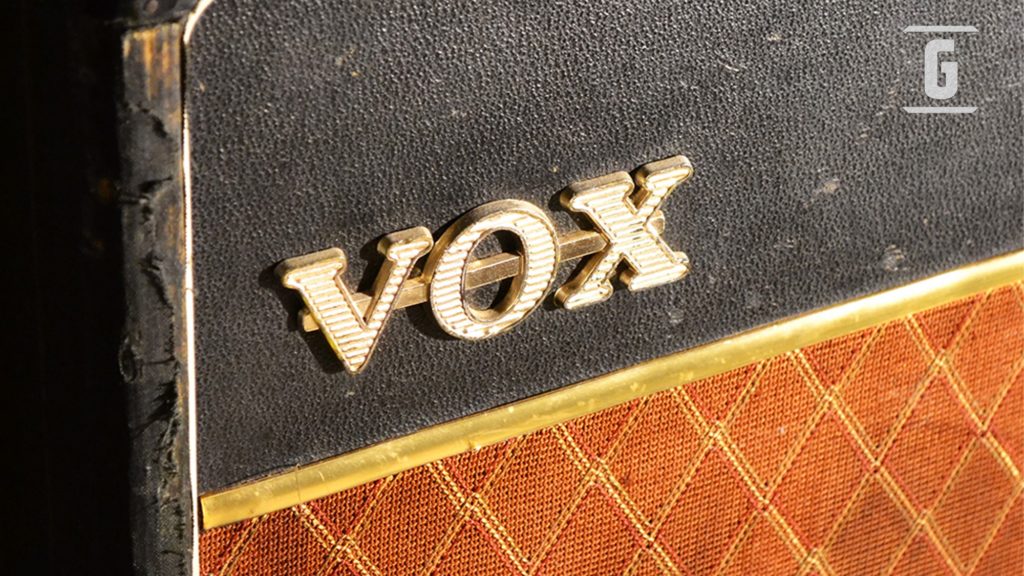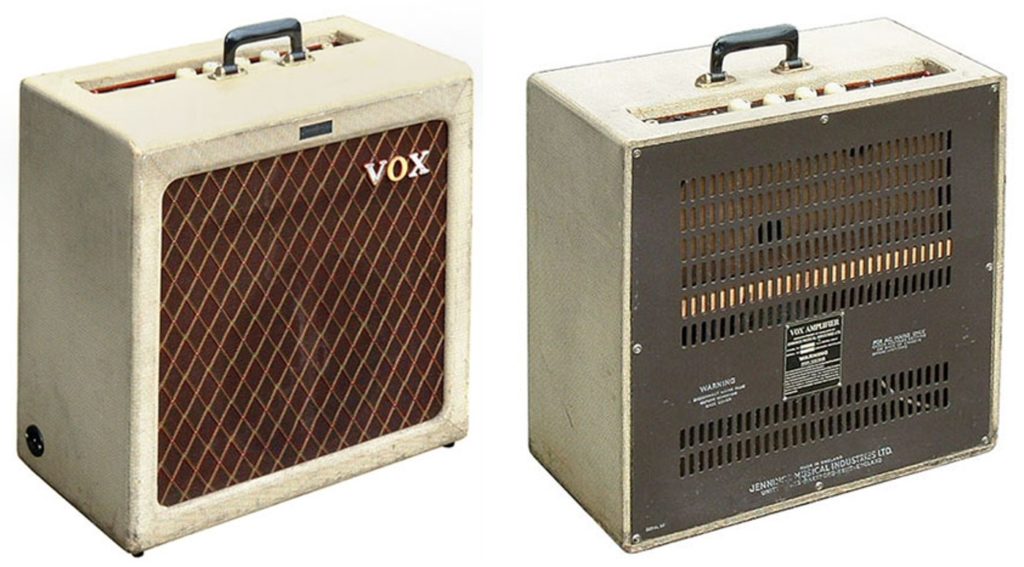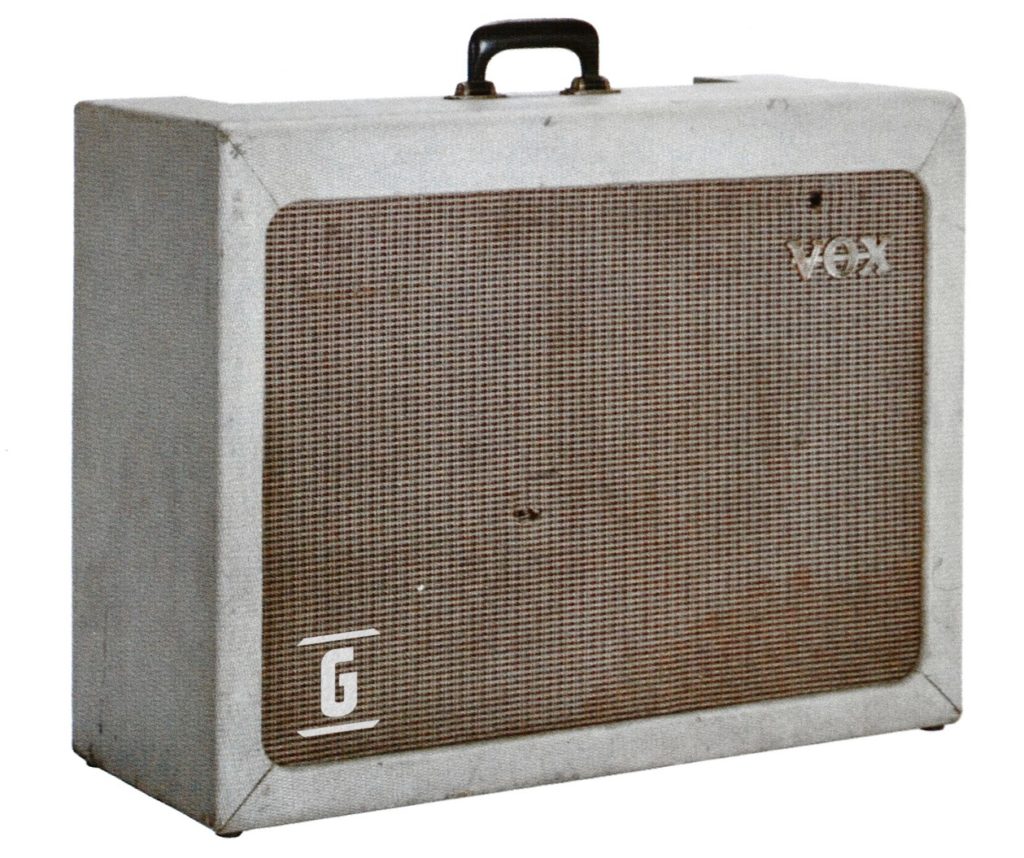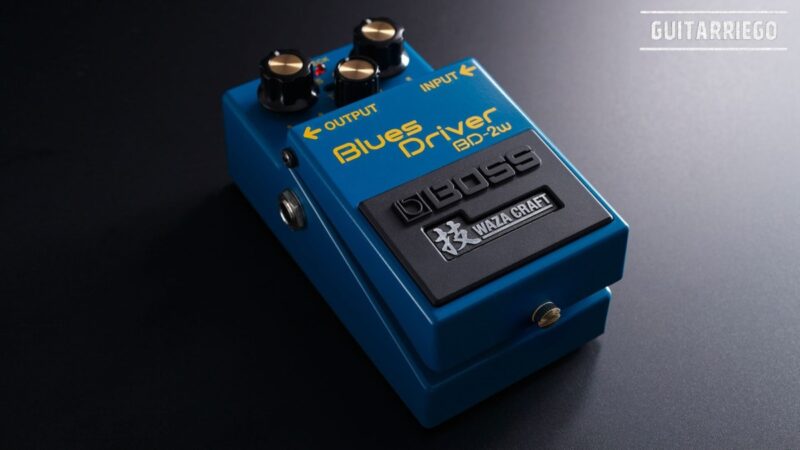The history of the legendary Vox AC15 and AC30 amplifiers

History of the Vox AC30 and AC15 amplifiers, which have defined the history and audio of a whole generation of great English bands, starting with the Beatles.
The creators of the Vox amplifiers: Thomas Jennings and Dick Denney
England and World War II
The history of the Vox AC30 and AC15 amplifiers dates back to the 1940’s. In an England fully immersed in World War II. Two names will stand out in this story, that of Thomas Walter Jennings (1917-1978) and Dick Denney (1921-2001).
Jennings was originally an amateur accordionist who served during the war in the Corps of Royal Electrical and Mechanical Engineers. Shortly after, he was discharged from the army for health reasons. And he assigned to the Vickers ammunition factory, until the end of the conflict.
Dick Denney was a fan of electronics and the guitar. It should be noted that since his adolescence, he liked to experiment with the family radio. But his tests did not always give the expected results.
At the beginning of World War II, everything related to amateur radio and its related was prohibited, which generated great frustration in the young Denney. Resigned, he continued to work alongside his father in the family barbershop. Surprisingly, Denney was deaf in one ear, so during the war he was posted to the Vickers munitions factory where Jennings worked.
Don’t miss our guide to the best free online guitar amp simulator options.

The friendship between Thomas Jennings and Dick Denney
In their free time, both Denney and Jennings would get together to play in an amateur way. Remember that the bombing of London was permanent, and this generated long hours of leisure in the shelters. This allowed Denney and Jennings to forge a friendship based fundamentally on their common interest in music and electronics.
Among their conversations, they would confess in an interview, they highlighted the observations they made about the amplification systems that some bands of the American army had. Back then, there were army bands that played the latest tunes to entertain the troops.
It is worth clarifying that all the amplification systems were very precarious and incipient at that time, and that the war did not allow the importation of this type of product, which is why it aroused so much interest in the two friends.
You might be interested in our tips guide to improving your tone with your amp.
Separate projects, but not for long
Jennings Organ Company
After the war, Jennings dedicated himself to repairing accordions and buying and selling instruments, until he established his own shop in 1946. At the same time, his concern led him to create a self-amplified electric organ that he called “Univox”. Which was a great success, which was perhaps the kick for what would come later. The instrument was marketed through his company Jennings Organ Company.

Guitarist, radio repairman and DIYer
Denney, on the other hand, was dedicated to repairing radios, while working as a guitarist in a stable lounge band.
In the year 1952, Denney suffers a pulmonary crisis. This forces him to move away from the scenarios and to rest. Thus, he takes up one of his dreams, designing a valve amplifier for guitar. As a result he created a small, 15-watt tube amp with a 12-inch speaker.
In those days, more power was not required, since the usual places to play were lounges or pubs. Later he perfected it by adding a vibrato and a tremolo, perhaps inspired by those included in the Wurlitzer organs.
Originally, this prototype generated some unwanted buzzing noises. So he opted for a valve change. Using EF86, ECC83 and EL84 solved the problem.
Of these primitive amplifiers he would make two more models. One would be the one showing his old friend Thomas Walter Jennings. Thus, one of the best guitar amplifiers in history began to take shape.
Appearance and launch of the Vox AC15

Denney, knowing about the Jennings Organ Company and taking advantage of his friendship with Thomas, decides to stop by his old friend’s store to show him his recent creation. Two days after giving him one of his models, Jennings, absolutely delighted with the result, summons him to offer to work together and launch the amplifier on the market through his company.
In view of this, he changes the name of the company to Jennings Musical Instruments -JMI-. In addition, Denney goes on to occupy a relevant position in the renowned company.
Thus, the AC1 /15 was launched on the market in January 1958, which would later become the Vox AC15. The aesthetic included a square front with cream tolex and the famous grille with diamonds, this is known as TV-front. With a darker sound than their successors, these first models did not include any alternative channels as they would years later.
Don’t miss our review of the best digital guitar amps.
Vox popularity and growth
Vox soon became popular with musicians and bands of the time. Established stars like The Shadows used these small teams.
However, both Jennings and Denney continued to bet on the amateur guitarist, and so they released two even smaller versions. In 1958, the 4-watt AC-2 came out, which would later become the Vox AC4, and the following year, 1959, they released the 10-watt Vox AC10. Both maintaining the same TV aesthetic of the AC-1 /15.

Vox AC30, the older brother of the AC1/15 or AC15
The musicians of The Shadows were delighted with the sound of the Vox, but knowing that the power was insufficient, they played with 60-watt Fender Twins. Thus, Hank Marvin, leader of the band, talks to Dick Denney to make them something bigger than the AC15. But Jennings rejected the proposal arguing that it would be unfeasible from all points of view. However, Dick Denney launched the order of The Shadows, beyond the refusal of his boss. So, in 1959 the mythical Vox AC30 appears, older brother of the AC15. The gang receives the first three units.
Also, you can see our comparison of Vox AC15 vs AC30 amps: review, differences and opinions.

Vox changes design and aesthetics
In 1960, Vox changes the aesthetics of amplifiers. It leaves the TV-front format design for the legendary cabinet design that it retains today.
Evolution of the Vox AC30 during its history
The new model was known as the Vox AC30/4, as it came with four inputs, two for each channel. The equipment’s preamplifier was the same as the AC1/15. But Vox discovers that the EF86 tubes were not efficient at high volume, since they were microphonic and even failed under the higher vibrations of a 30-watt unit. Faced with this, they redesign the preamp and replace the EF86 tubes with ECC83 tubes and add one more channel. In 1961, they launch this new model called AC30/6, which had three channels and two inputs for each. These changes were optimal for performance at high volumes.

Appearance of the Vox AC30 with Top Boost
In this time, Vox creates the “Top Boost” circuit. Initially, it was available as an optional addition to the stock model, to which a separate rear panel with functions was added. The “Top Boost” module could be ordered factory installed. This optional module introduces an additional gain stage and tone controls for bass and treble, as opposed to the Normal Channel‘s single tone control.
The success was such that it did not take long for it to become a standard function and channel. Thus appears, around 1963, the version called Vox AC30/6 Top Boost or Vox AC30TB. In this, all the functions are available on the main panel. This version of the equipment, although it has continued to change throughout the rest of its history, already has most of the current characteristics of the classic Vox AC30 and is definitely the one that sounds on many of the early Beatles albums and other great bands of those years. Later the Vox AC30 would also add a Spring Reverb, a spring reverb.
Don’t miss our review on the best cheap guitar amps for beginners.

Vox AC30, «The British Tone» and the Beatles
Thus, the Vox AC30 marked an era and the rest is history of Pop and Rock music, being part of the British Invasion of bands. Chosen by musicians of all genres and decades, from “the boys from Liverpool”, to Brian May of Queen or The Edge of U2. Vox is a company that branched out building guitars and effects, and continued to make organs. But always, it will represent synonymous with “amplifier” and “The British Tone”, and of course, with the Beatles, the band that made an already great company immense.
For more information visit the Vox website.
You can share opinions or also chat about this and more with other musicians in our comments section.






